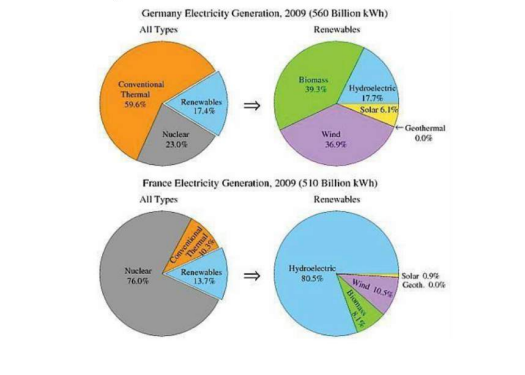The bar chart depicts the monthly expenditure on food, gas and clothing of affirmably living in the USA in 2010, Overall, it can be seen that levels of expenditure fluctuated over the period. o begin, in January the most money was spent on food, at approximately $500 per month. Although expenditure on food increased slightly the following month, it then fll to account for the lowest expenditure of all the items at the end of the period at just over S30. Gas appeared to follow the opposite pattern o food spending. It started lower at about 5350 per month, falling in the following month, and then increasing significantly to finish at just under $600 in April Clothing, which at just over $200 accounted for the lowest expenditure at the beginning of the period, fluctuated dramatically over the time frame. After reaching around the same levels as food in February (nearly S600),it dropped markedly in March, then jumped to just under $700 i the final month. With the exception of an increase in March, average spending decreased lightly over the four months.
(183 words)
Band 7-8 Version
The bar chart shows the monthly expenditure of a family in the USA in 2010 on three items: food, gas, and clothing. Overall, spending varied considerably over the four months, with food initially being the highest and clothing ending as the most expensive item.
In January, the family spent the most on food, approximately $500. This figure rose slightly in February, then declined steadily to around $300 by April, making it the lowest of the three by the end of the period. Gas started at about $350, dropped in February, and then increased significantly, peaking just below $600 in April.
Clothing saw the most fluctuation. It began at slightly above $200, the lowest of all categories in January, surged to nearly $600 in February, dropped sharply in March, and then rose again to just under $700 in April, the highest point overall.
Except for a rise in March, average monthly spending showed a slight downward trend throughout the period.
Word count: 169
Band 9 Version
The bar chart illustrates monthly household expenditure on food, gas, and clothing by a family in the United States in 2010. Overall, spending fluctuated throughout the four-month period, with clothing experiencing the most dramatic changes and ending as the highest expense.
At the beginning of the year, food was the largest expense, at around $500, but this gradually declined, reaching just above $300 in April. In contrast, gas started at roughly $350, fell in February, and then climbed steadily, nearly doubling by April to almost $600.
Clothing showed the most volatility. Initially the least expensive item at just over $200 in January, spending surged to approximately $600 in February, plummeted in March, and rose sharply again to just below $700 by April, the highest figure for any category.
Despite these fluctuations, the average total monthly spending declined slightly across the period, with a brief rise in March.
Word count: 162
Comparison Table
| Aspect | Band 7-8 Version | Band 9 Version |
|---|---|---|
| Vocabulary | Some variety (fluctuated, dropped, rose) | More precise and formal (illustrates, plummeted, surged) |
| Structure | Clear but could improve transitions | Smooth transitions, compact summary statements |
| Data Coverage | Covers all major trends and comparisons | Highlights trends and contrasts with sharper focus |
| Clarity & Cohesion | Occasional awkwardness | Highly readable, well-organized |
Sentence Comparisons
| Original | Improved |
|---|---|
| “Gas appeared to follow the opposite pattern o food…” | “In contrast, gas showed an opposite trend to food…” |
| “Clothing…fluctuaied dramatically over the time frame.” | “Clothing exhibited significant volatility throughout the period.” |
| “With the exception of an increase in March…” | “Despite a rise in March, average spending showed a slight decline overall.” |
| Original | Improved |
|---|---|
| “Gas appeared to follow the opposite pattern o food…” | “In contrast, gas showed an opposite trend to food…” |
| “Clothing…fluctuaied dramatically over the time frame.” | “Clothing exhibited significant volatility throughout the period.” |
| “With the exception of an increase in March…” | “Despite a rise in March, average spending showed a slight decline overall.” |
Grammar Mistakes
| Mistake | Correction | Explanation |
|---|---|---|
| “o begin, in January…” | “To begin, in January…” | Typo: “o” → “To” |
| “then fll to account for…” | “then fell to account for…” | Spelling error: “fll” → “fell” |
| “fluctuaied dramatically” | “fluctuated dramatically” | Spelling error: “fluctuaied” → “fluctuated” |
| “Afler reaching around the same levels…” | “After reaching approximately the same level…” | Typo and more natural phrasing |
| “just under $700 i the finalmonth.” | “just under $700 in the final month.” | Missing space and article |
Vocabulary Repetition
| Repeated Word | Suggestions |
|---|---|
| “Expenditure” | Spending, outlay, expense |
| “Increased” | Rose, climbed, grew |
| “Fell/Dropped” | Declined, decreased, plummeted |
IELTS Writing Task 1 Exercises with Answers
Choose the correct word from the box to complete the sentences:
(plummeted, expenditure, peaked, fluctuated, surged, contrast)
- Spending on gas __________ in April, reaching nearly $600.
→ surged - In __________ to food, clothing became the most expensive category by April.
→ contrast - The amount spent on clothing __________ significantly over the four-month period.
→ fluctuated - Average household __________ declined slightly overall.
→ expenditure - In March, spending on clothing __________ before rising again in April.
→ plummeted - Food __________ in February before falling steadily to the end.
→ peaked


